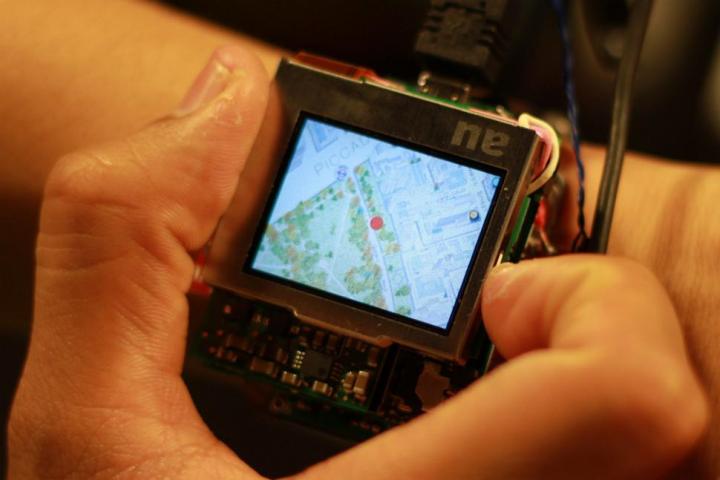
If you’re frustrated by tiny touchscreens and fiddly buttons on smartwatches today, then you’ll be intrigued by this innovative prototype control system, which turns the watch face into a twisty, turny joystick. It’s the work of engineers at the Human-Computer Interaction Institute in Pittsburgh, and is designed to help those of us with sausage-like fingers operate the usually tiny devices.
The prototype watch uses a 1.5-inch LCD screen mounted on a set of joystick sensors, which can read panning movements in four directions (left, right, up, and down) a small twist to the left and right, a tilt, and finally, a downward click. All these gestures apply to different functions on screen. At its most basic, the left or right tilt is used to slide between open apps, just like a swipe across the touchscreen. The benefits are obvious: No nasty smears on the display, no wrongly pressed icons, and no getting your fingers in the way of what’s happening on the screen.
The twist and click functionality is demonstrated by setting an alarm. Twist the display to move the clock’s hands to the desired position, and click to set it. It may sound like a small change, but it’s likely to be faster and more intuitive than the usual scrolling list of numbers. The twist and click feature is also shown when the watch is acting as the viewfinder for a camera. Twist to zoom in and out, and click to capture the moment. Check out the video below, where you can also see how well the navigation system works with a maps app.
Like the basic tilt feature, the four-way navigation system can be used instead of touching the screen when zipping through menus, interacting with the calendar, or browsing playlists. Again, a click activates or selects functions. It all sounds incredibly intuitive, but there are a few problems with getting the system onto a watch we can buy.
The research paper mentions the need for extra space inside the device, and the problems mechanical components can present, including a possible loss of water resistance. That’s all provided there’s enough juice in the watch’s battery to keep all this up and running, and figuring out a convenient locking system to stop your sleeves accidentally activating the watch.
Still, one would expect to find problems in any proof of concept prototype. We’re hoping an enterprising manufacturer can come up with solutions in the future, so we can try this out for real.



